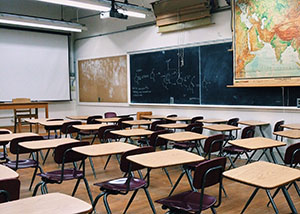Schools
Helping schools address safe handling, storage and disposal of chemicals and products in all areas of their campus.
 There are many areas within a school building where hazardous chemicals can be found, such as art rooms, science rooms and laboratories, wood and metal shops, photography rooms, graphic arts and printing rooms, and even the custodial department (cleaners and pesticides). Many schools don’t have procedures for proper storage or the money to handle the potential cost for disposal of unwanted, unused and out-of-date chemicals.
There are many areas within a school building where hazardous chemicals can be found, such as art rooms, science rooms and laboratories, wood and metal shops, photography rooms, graphic arts and printing rooms, and even the custodial department (cleaners and pesticides). Many schools don’t have procedures for proper storage or the money to handle the potential cost for disposal of unwanted, unused and out-of-date chemicals.
The New Hampshire Pollution Prevention Program (NHPPP) provides guidance to school administrators and staff on common questions regarding proper chemical storage, managing hazardous and universal wastes (for example, mercury-containing bulbs and thermostats, etc.), how to dispose of unwanted chemicals, and energy and water conservation strategies.
Below is some guidance on the big areas to focus on in any school. Some other good resources for schools are the TURI: Toxics Use Reduction for Schools webpage and EPA’s Protecting Children’s Environmental Health webpage.
Related Content
Need Help?
NHPPP is available to assist schools by performing on-site assessments to identify potential hazards associated with school chemicals and products.




